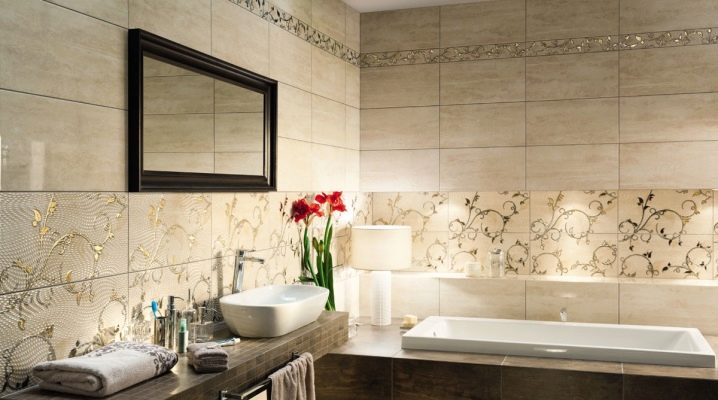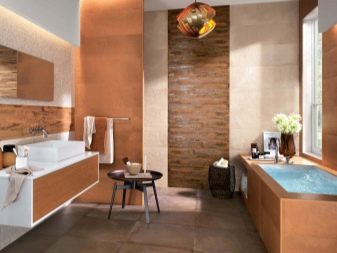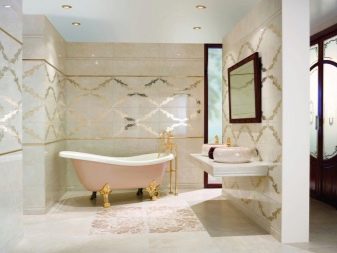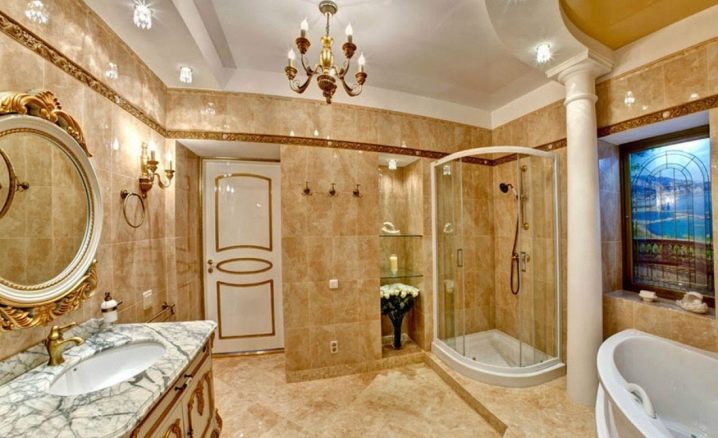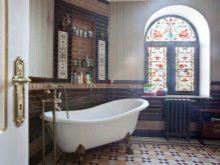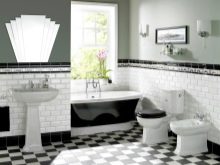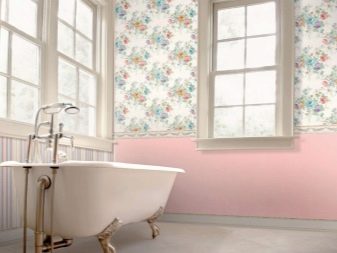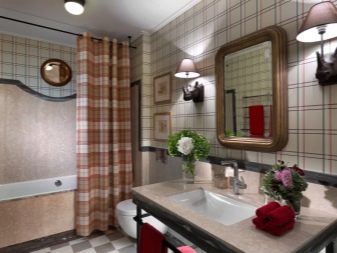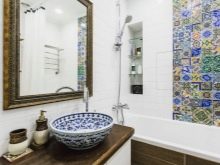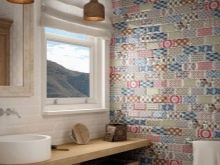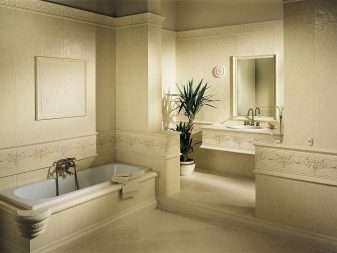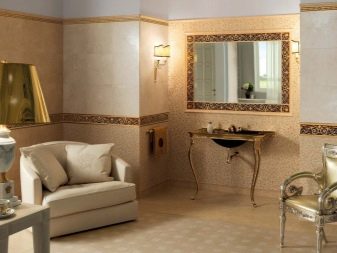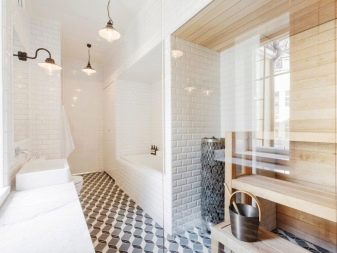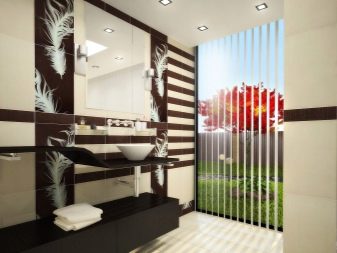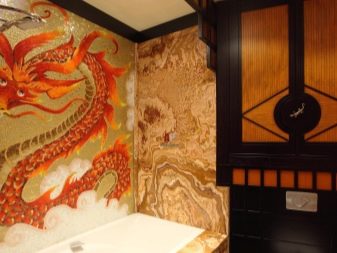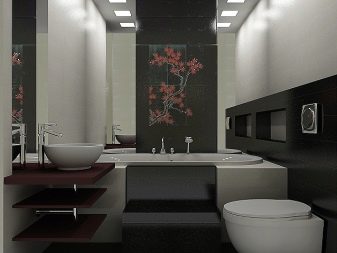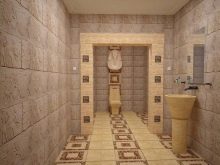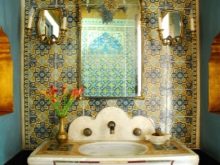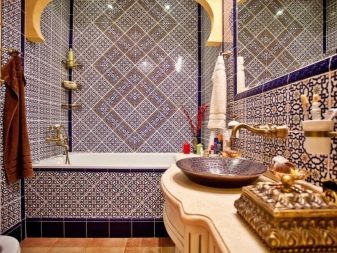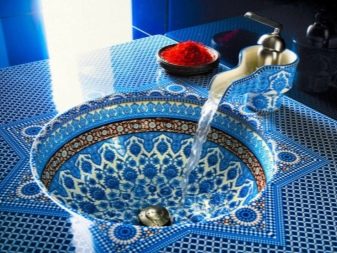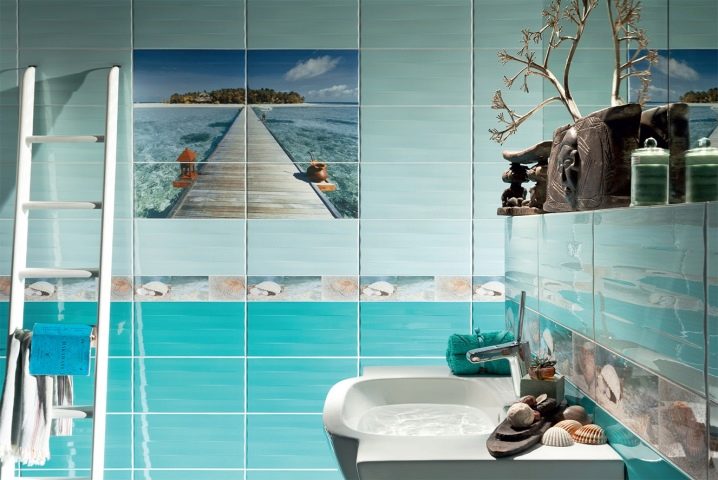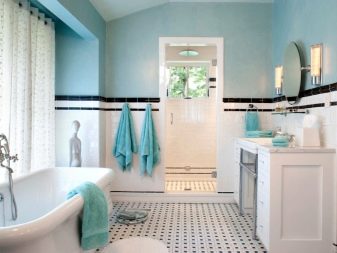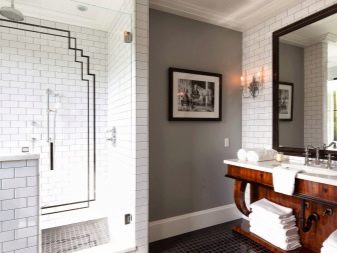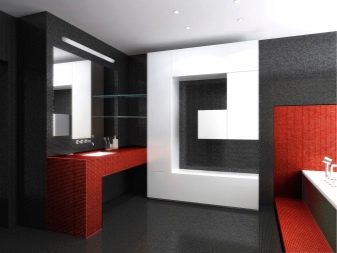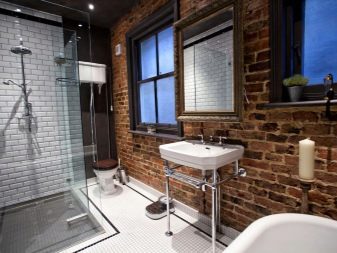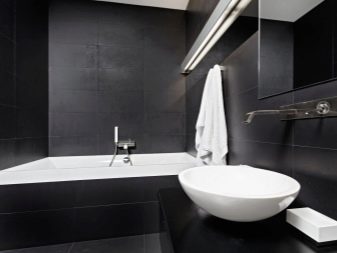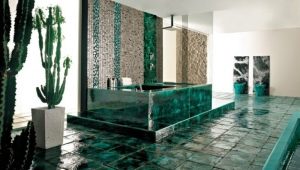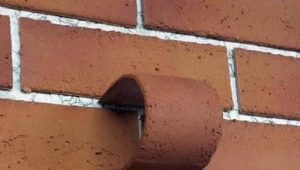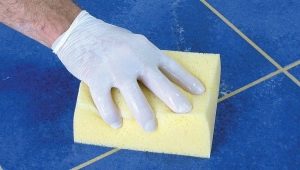Tiles in different styles in the interior
Ceramic tiles - a spectacular element of decor. It can brighten up the most boring walls and will become a reliable flooring. A huge variety of different design design of this material allows it to be unique and at the same time universal. Perhaps there is no such style where the tile could not find a place for itself.
Classic European Destinations
The classic style involves the use of floor tiles under the stone (especially marble), as well as imitation of expensive wooden parquet. On the walls dominates the bright colors. There may be a small floral motif.
This style has its own directions:
- England associated with Big Ben, double-decker buses, red telephone booths. If you use these images, you can emphasize the English motives of the interior.In addition, the kitchen can use the so-called tile "Metro" (or white "hog"). Few people know, but it was from the English subway that the design of these ceramic samples was taken. Chess stacking of floor tiles is becoming a rather popular interior design solution in the English style.
- The English trend has become a kind of offshoot of the classics, especially Victorian style. When interior design in a similar style would be appropriate to use the floor tiles in marble or stone. On the walls, especially in the bathroom, you can lay bright samples with small floral bunches (especially roses).
If you want to give the dynamics to the interior, then images of the hound of hunting or the use of “tartan” patterns will help.
- Provence It is created with the help of an abundance of floral ornament, “burnt out” flowers in the sun. This is a rather romantic, rustic and calm style. The color combination of white and blue looks impressive in it. Also for this direction tend to use delicate olive, turquoise, blue, beige shades.If you need a floor tile, it is better to choose an imitation of a wooden floor. The main criteria for registration - ease and simplicity.
- Another “village” style - This is a chalet and country. The chalet is associated with the snowy Alps. In this style, the main finishing materials are wood and stone, a natural color palette without flashy colors and drops. You can use brown, gray, burgundy, beige, red, white, dark green, blue, yellow. Country music is a bit like a Chalet. But he comes from America. In his style small bright color accents are allowed. Natural materials are also preferred in decoration.
- Design, for example, a bathroom Mediterranean style You can use a beige, light brown floor tile to create a feeling of sand under your feet, or, alternatively, choose a floor that simulates the boards. In other areas of the house or apartment in the Mediterranean style, you can use tiles that imitate stone. Tiles on the walls with the presence of shades of aqua will be relevant in a similar design direction.For the design of kitchen aprons, you can choose a bright tile with national ornaments.
- The Mediterranean style has many sub-styles that arose geographically around the Mediterranean basin. So, greek substyle involves the use of cool and pastel colors, as well as white, blue, lemon, some shades of green. The most recognizable “trick” of the Greek style is the famous ornament “loop of the meander”.
And you can also use images of various frescoes, as well as taken from antique objects, for example, vases. On the floor, you can use the tile under the stone.
- Italian style warmer. Light colors in the decoration, including golden-orange, beige, terracotta and brown, and, of course, olive, are typical of this style. Tiles in the kitchen can be accent. It should be bright and textured, with an intricate ornament.
- Scandinavian and Japanese styles fundamentally different from all sea directions, even though initially geographically and there is proximity to the sea.So, in order to decorate a room in the Scandinavian spirit, you need to use natural materials, which means that tile will fit perfectly under a stone or a tree. The main colors of the interior are white, milky, as well as cold light colors.
Oriental accents
The aforementioned Japanese style is included in the cohort of Oriental styles. It is characterized by the use of natural materials (especially wood). To hint that the interior is built in the style of the Country of the Rising Sun, you can use images of sakura flowers, samurai paraphernalia.
In general, the oriental style is characterized by naturalness, the use of carpets. Hence, it is logical to use the classical ornaments of various countries. For the eastern style is characterized by the use of blue and green colors. There are also colors, ornaments and symbols that are characteristic of a particular area:
- Egyptian style - clear geometry, drawings on the walls of the pyramids, images of ancient deities, pyramids, an abundance of gold - these and other associations are quite appropriate when recreating this direction;
- Moroccan style - This is the use of national ornaments, bright handmade tiles;
- chinese style can be created using a dragon image;
- Indian style - here a riot of colors is possible, as well as images of elephants, Hindu deities;
- Turkish style recognizable by its signature ornament "cucumber".
Modern stylistics
This style has its own directions.
- It is echoed in its design by the Mediterranean, but the so-called sea style. Especially impressive it looks in the bathrooms. 3-D images of marine fauna, simple insertions of thematic illustrations (in the form of several or single fragments with the image of fish, dolphins), and simply a mosaic in the cold ocean scale are suitable for a room where water dominates.
However, this style is not limited to the blue-blue scale, it may contain shades of green, as well as sand motifs (on the floor or even on the walls).
- Retro and Art Deco - these concepts most often mean the style of the 20-30s of the last century.The retro-style color palette is as follows: muted tones of brown, gray, beige, white and milky, coffee and lemon. Art deco uses the motifs of black and white piano keys, discreet colors (black, white, purple, gray and beige), and contrasting black and white patterns.
- Techno and hi-tech differ in their technical direction. The main thing is functionality. Metal, gloss, mirror surfaces, asymmetry and play of contrasts are the distinctive features of this direction.
- Loft - Initially, this style was a style of the premises of the former workers of factories and factories, which were converted into housing. Its signs are cold colors in the finish, rough textures, metal and especially rough brick walls.
- In minimalism everything is clear, strict and nothing superfluous. One or two colors prevail. All lines are strictly delineated and only simple forms.
- Fusion - continuous experiment. The combination of everything and everything. A variety of styles can be mixed. This is a complete antagonist of minimalism.
An overview of the tiles in different style solutions, see the video below.
